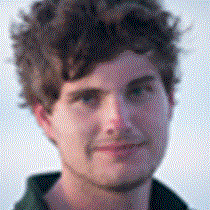We often say aboard National Geographic Explorer that the Daily Program, neatly printed and distributed to your cabin door the night before, represents the Expedition Leader's fantasy of what might ensue, something from which to deviate as the day unfolds. That deviation might result from wind, severe weather, or ice blocking our intended route. Today we found a new reason to deviate, and, boy, were we happy for it.
We had finished a morning activity at Cierva Cove (as per program): leisurely Zodiac rides in a protected bay with glaciers tumbling down the steep mountain slopes on all sides all around us. Eric the Ice Man had retrieved the data from the Extreme Ice Survey cameras that have monitored the glacier since last March. The view was staggering in its beauty on this, the snowy side of the Antarctic Peninsula. So we left, bound for...it really doesn't matter where, because we never got there.
Last night our on-board team of killer whale biologists, John Durban and Holly Fearnbach, gave us a presentation on their research on Antarctic killer whales (research supported in part by Lindblad Expeditions and the National Geographic Society.) Little did we know how rapidly we would put our new knowledge to use. Today, it was John and Holly (of course!) who first sighted the group of the black and white predators in the far distance of Gerlache Strait. They were in a tight group and very active at the surface. As we approached, the cause became evident. The killer whales had surrounded a juvenile minke whale and were leaping from the water, breaching repeatedly on the young whale to prevent it from taking a breath, exhausting it. It was over quickly; the minke whale was dispatched and scraps of blubber and flesh rose to the ocean surface, leaving no doubt of the outcome of the encounter. Birds instantly came to the site to feed on the oil and scraps: skuas, Wilson's storm petrels, and giant petrels.
Recent research on killer whales indicates that what we once called a single species, Orcinus orca, actually consists of a number of non-interbreeding forms that are distinct in diet, behavior, and genetics; that is, they behave as separate species, and no doubt they will soon be regarded as such. We were seeing the form that the biologists call "Type A"; they are the largest of the Antarctic killer whales, and their coloration is a stark contrast of black and white. They are specialist predators on Antarctic minke whales.
The most interesting behavior actually occurred after the kill. The group gathered at the kill site and, for a while, they disappeared from view. No doubt, they were consuming parts of their prey. Afterwards, though, they became quite active at the surface. Had we a hydrophone in the water, I suspect that we would have heard a great deal of killer whale vocalization. Apparently, the group was announcing their success; soon they were joined by whales (still Type A) from another social unit, and the remains of the prey were shared among the two groups, a form of reciprocal altruism. Killer whales live in matrilineal (following the female line) family-structured groups and the two groups may have shared genes, making their altruistic sharing of food beneficial to both groups.
John and Holly quickly boarded a Zodiac with Jason driving. They approached the whales, John armed with a crossbow and Holly with a camera to record the markings of individual whales. Their afternoon was wildly successful. Tags were attached to the dorsal fins of several whales, and skin plugs were recovered for genetic analysis. The tags will send a signal to an orbiting satellite to record location of the tagged whales, and one tag will transmit dive depths. By evening Recap, John and Holly had already downloaded information on the movement of two of the whales after we had parted company. (You can all continue to follow these whales on the web by going to https://swfsc.noaa.gov/MMTD-KillerWhale-Tracking/) Thus, Lindblad Expeditions, the National Geographic Society, and our guests all have shared in advancing the state of Antarctic science, and we had a most remarkable day in doing it.









